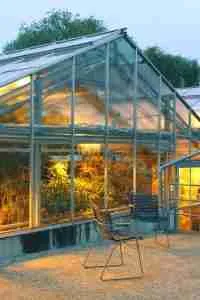Contents
ToggleKey Takeaways:
- Lemongrass is a perennial plant: Unlike annual plants that need to be replanted each year, lemongrass is a perennial plant that can survive for many years under the right conditions.
- Growing lemongrass in different climates: Lemongrass can be grown in a variety of climates, but it thrives best in warm and tropical climates. However, with proper care and protection, lemongrass can also survive in colder climates.
- Tips for cultivating lemongrass: Lemongrass requires plenty of sunlight and well-drained soil to grow successfully. It can be grown in containers or directly in the ground, making it a versatile plant for different gardening setups.
Introduction: Understanding Lemongrass as a Perennial
Lemongrass, a versatile herbaceous plant, is known for its aromatic citrus-like flavor and numerous health benefits. As a perennial plant, it has the ability to regrow year after year, making it a popular choice among gardeners. This article delves into the characteristics and cultivation of lemongrass, providing valuable insights for those interested in understanding its perennial nature.
Lemongrass, scientifically known as Cymbopogon, belongs to the Poaceae family and is native to tropical regions. Its long, slender leaves and vibrant green color make it an appealing addition to gardens, while its distinct lemony aroma adds a refreshing touch to culinary dishes and beverages.
As a perennial plant, lemongrass exhibits the ability to thrive and survive for multiple growing seasons. This distinctive feature sets it apart from annual plants, which germinate, grow, produce seeds, and die within a single year. The perennial nature of lemongrass allows it to establish a strong root system, enabling it to regrow and flourish year after year.
Cultivating lemongrass is relatively straightforward, making it suitable for both novice and experienced gardeners. It prefers well-drained soil, adequate sunlight, and consistent watering. Planting lemongrass in a pot or raised bed can help control its growth and prevent it from spreading uncontrollably.
One must be cautious not to confuse lemongrass with its close relative, citronella grass. While they share similarities in appearance and fragrance, citronella grass belongs to a different species and is predominantly used for its mosquito-repellent properties.
The Basics of Lemongrass: Varieties and Uses
Lemongrass, a widely used herb with a refreshing citrus aroma, comes in different varieties that are not only cherished for their distinct flavors but also for their various uses. In this section, I’ll shed light on the difference between two popular types of lemongrass: West Indian lemongrass and citronella grass. We’ll explore how these varieties differ in terms of their growth patterns, culinary applications, and medicinal properties. Get ready to discover the unique characteristics and benefits of each type of lemongrass.
The Difference Between West Indian Lemongrass and Citronella Grass

The Difference Between West Indian Lemongrass and Citronella Grass:
| West Indian Lemongrass | Citronella Grass |
|---|---|
| Has a stronger lemon scent and flavor | Has a milder lemon scent and flavor |
| Native to tropical regions | Native to Southeast Asia |
| Used in culinary dishes and teas | Commonly used in insect repellents |
| Grows taller, reaching up to 6 feet | Grows shorter, usually around 3 feet |
| Known for its thick purple stems | Characterized by slim green stems |
These unique details highlight the contrasting features of both types of grass, allowing individuals to choose according to their specific needs.
A true fact: The versatility of lemongrass can be attributed to its high citral content, which gives it its distinctive aroma and flavor (source: ‘The Basics of Lemongrass: Varieties and Uses’).
For more information on how plants grow and their unique characteristics, click here.
Does lemongrass’s survival in cold temperatures make it a true perennial or just a superhero in disguise?
Lemongrass and Winter: Can it Survive Cold Temperatures?
When it comes to lemongrass and its ability to withstand cold temperatures, one aspect that stands out is its perennial nature. Lemongrass, with its scientific name Cymbopogon citratus, has the remarkable ability to survive harsh winter conditions.
This perennial herb proves to be a resilient plant that returns year after year, making it a great asset for gardeners and enthusiasts in regions that experience cold climates. In this section, we will explore the perennial nature of lemongrass and shed light on its ability to thrive despite the challenges posed by winter.
The Perennial Nature of Lemongrass
Lemongrass exhibits its perennial nature by surviving cold temperatures and thriving in different climates. It requires suitable growing zones, specific sunlight and shade requirements, and the right soil for successful growth. Methods for preserving lemongrass during winter include overwintering indoors as a houseplant or keeping bare-root stems in water. Overall, the perennial nature of lemongrass allows individuals to enjoy its benefits all year round.
From tropical paradises to frosty landscapes, lemongrass braves all climates like an undercover spy with a taste for delicious adventures.
Curious about how other plants fare in different climates? Discover whether tulips come back each year.
Growing Lemongrass in Different Climates
When it comes to growing lemongrass, understanding its suitability in different climates is crucial for a successful harvest. So, let’s dig into the specific growing zones where lemongrass thrives best.
According to my research, lemongrass is known to flourish in USDA hardiness zones 9 and higher. However, if you’re residing in a colder climate, don’t worry! I’ve got some expert tips on how to keep your lemongrass thriving during the summer months.
So, let’s explore the optimal growing zones for lemongrass and discover some helpful strategies for cultivating it in colder climates.
Suitable Growing Zones for Lemongrass
Lemongrass is a perennial herb that can thrive in various climate conditions. Understanding the suitable growing zones for lemongrass is essential for successful cultivation. Here are the key points to consider:
- Lemongrass can be grown in USDA hardiness zones 9-11, where the temperatures stay above freezing.
- It prefers warm and tropical climates with temperatures ranging from 40°F (4°C) to 70°F (21°C).
- For cooler regions, lemongrass can be grown as an annual or brought indoors during winter.
- It requires full sun exposure and well-drained soil for optimal growth.
- Humid environments with sufficient rainfall are ideal for lemongrass cultivation.
In addition to these points, it’s important to note that lemongrass can also be successfully cultivated in containers and brought indoors during colder months. By providing suitable growing conditions, lemongrass can be enjoyed throughout the year. Looking for companions for your garden? Learn about companion plants for strawberries.
Keep your lemongrass cool as a cucumber in the summer with these chill tips!
Thriving in Cold Climates: Summer Tips for Lemongrass
Lemongrass, known for its ability to thrive in cold climates, requires specific care during the summer months. Here are some key tips for ensuring its optimal growth during this period:
- Provide ample sunlight: Lemongrass thrives in full sun, so ensure it receives at least six hours of direct sunlight daily.
- Water consistently: Keep the soil evenly moist, but not waterlogged, as excessive moisture can lead to root rot.
- Prune regularly: Trim overgrown leaves and stems to encourage healthy growth and prevent overcrowding.
To further promote the thriving nature of lemongrass in cold climates during summer months, remember to fertilize with a balanced organic fertilizer every three to four weeks.
By following these tips, you can successfully cultivate lemongrass and enjoy its benefits all year round. Don’t miss out on the opportunity to add this versatile perennial herb to your garden.
Cultivating lemongrass is like finding the perfect balance of sunlight and soil, it’s all about creating the ultimate spa retreat for your taste buds.
Cultivating Lemongrass: Ideal Growing Conditions
When it comes to cultivating lemongrass, understanding the ideal growing conditions is key to achieving successful growth. Let’s dive into two important aspects: sunlight and shade requirements, and choosing the right soil.
Lemongrass thrives in specific lighting conditions, and we’ll explore the optimal amount of sunlight it needs to flourish. Additionally, the type of soil plays a crucial role in lemongrass growth, and we’ll discuss the factors to consider when selecting the ideal soil for cultivating this perennial herb.
So, let’s dig into the details and get ready to grow some healthy lemongrass!
Sunlight and Shade Requirements for Lemongrass
Lemongrass requires adequate sunlight and shade to thrive. Here are four essential points regarding the sunlight and shade requirements for lemongrass:
- Lemongrass needs full sun exposure for at least 6 hours a day to grow well.
- It can tolerate some partial shade, especially in extremely hot climates, but too much shade can hinder its growth.
- Providing a balance between direct sunlight and filtered or dappled shade is ideal for lemongrass.
- It is important to avoid placing lemongrass in heavy shade as it may result in weak and leggy growth.
In addition, it is worth mentioning that providing the right amount of sunlight and shade helps ensure optimal growth and robustness in lemongrass plants.
A unique detail about the sunlight and shade requirements for lemongrass is that while it thrives in full sun, it can also adapt to some degree of shading. This flexibility allows gardeners in various climates to successfully cultivate lemongrass by adjusting the level of sunlight exposure accordingly.
The key to lemongrass success lies in soil choice, because even this herb knows that when it comes to growth, it’s all about the dirt.
Choosing the Right Soil for Successful Growth

Choosing the right soil for successful growth of lemongrass is crucial. Here are 5 key factors to consider:
- Type of Soil: Lemongrass prefers well-draining soil that is rich in organic matter.
- pH Level: Aim for a pH level between 6.0 and 7.5, as lemongrass thrives in slightly acidic to neutral soil.
- Moisture Retention: The soil should have good moisture retention capabilities without becoming waterlogged.
- Aeration: Adequate air circulation is important, so choose a soil mix that allows proper oxygen exchange for root development.
- Nutrient Content: Provide a fertile soil with balanced nutrients like nitrogen, phosphorus, and potassium to support healthy growth.
In addition to these factors, it’s worth noting that adding compost or well-rotted manure can improve the overall quality of the soil. This will help provide essential nutrients and enhance its ability to retain moisture.
For optimal growth, ensure you choose a location with ample sunlight (around 6-8 hours daily) and partial shade during extremely hot periods. This will further aid in the successful growth of lemongrass.
To improve drainage in heavy clay soils, consider incorporating sand or perlite into the mixture. On the other hand, if your soil tends to dry out quickly, adding organic matter like peat moss can help retain moisture.
By selecting the right kind of well-draining, nutrient-rich soil and providing adequate sunlight and moisture levels, you can create an ideal environment for lemongrass to thrive throughout its perennial life cycle.
Overwintering Lemongrass: Methods for Preservation
When it comes to overwintering lemongrass, there are a couple of methods that can be used for preservation.
One option is to bring the lemongrass indoors as a houseplant during the colder months. This allows you to continue enjoying fresh lemongrass throughout the year.
Another method involves keeping the bare-root stems in water, which can be a convenient way to preserve the plant while also propagating new growth.
Both methods have their advantages and considerations, so let’s dive into each approach and explore how they can help you keep your lemongrass thriving.
Method 1: Overwintering Indoors as a Houseplant
When it comes to preserving lemongrass during the winter months, one effective method is to overwinter it indoors as a houseplant. This method allows you to continue enjoying the benefits of lemongrass all year round, even in colder climates.
Here is a simple 5-step guide for overwintering lemongrass indoors as a houseplant:
- Prepare the plant: Before bringing your lemongrass plant indoors, trim it down to about 6 inches above the soil level. Remove any dead leaves or stems, and gently loosen the root ball.
- Choose a suitable container: Select a pot that is large enough to accommodate the size of your lemongrass plant. Ensure that it has drainage holes at the bottom to prevent waterlogging.
- Provide adequate sunlight: Lemongrass requires sunlight for healthy growth. Place your potted lemongrass in a sunny location near a south-facing window where it can receive at least 6 hours of sunlight each day.
- Maintain proper watering: Water your indoor lemongrass plant regularly, keeping the soil evenly moist but not soggy. Avoid overwatering, as this can lead to root rot.
- Monitor humidity levels: Lemongrass thrives in humid conditions. To provide sufficient humidity for your indoor plant, place a tray filled with water near the pot or use a humidifier if necessary.
It’s important to note that while overwintering lemongrass indoors allows it to survive cold temperatures, it may experience some dormancy during this time. However, with proper care and attention, your lemongrass will continue to grow and can be enjoyed throughout the winter season.
Historically, people have been using various methods to preserve plants like lemongrass during cold winters when outdoor cultivation becomes challenging. Overwintering plants indoors as houseplants has been practiced for centuries and continues to be an effective way to ensure their survival and enjoyment all year round. Drowning your lemongrass roots isn’t ideal, unless you want to turn your kitchen into an indoor swamp.
Method 2: Keeping Bare-Root Stems in Water
Keeping bare-root stems in water is an effective method to preserve lemongrass during winter or other cold temperatures. By following a simple 3-step guide, you can ensure the survival and growth of your lemongrass plants throughout the year.
- Prepare the bare-root stems: Start by trimming off any leaves from the stems, leaving only a few inches at the top. Then, place the stems in a container filled with fresh water, making sure that at least half of each stem is submerged.
- Choose the right location: Find a spot where your container can receive indirect sunlight, as direct sunlight may cause excessive evaporation and damage to the lemongrass stems. It’s also important to keep them away from drafts or extreme temperature changes.
- Maintain proper care: Regularly change the water in the container to prevent stagnation and ensure cleanliness. Additionally, monitor the moisture level of the stems and replenish with fresh water as needed. Over time, you may notice new roots forming on the stems, indicating successful preservation.
This method of keeping bare-root stems in water allows for continued growth and survival of lemongrass plants during periods when they would typically be dormant. With proper care and attention to detail, you can enjoy fresh lemongrass all year round without needing to replant or invest in additional resources.
Conclusion: Enjoying the Benefits of Lemongrass All Year Round
Lemongrass, a popular herb known for its numerous benefits, can be enjoyed throughout the year due to its perennial nature. With its unique aromatic and medicinal properties, lemongrass offers a versatile addition to any garden or culinary repertoire.
This perennial herb, scientifically known as Cymbopogon citratus, not only adds a refreshing citrus flavor to dishes but also boasts an array of health benefits. From alleviating digestive issues to reducing inflammation, lemongrass has been used for centuries in traditional medicine.
One of the key advantages of lemongrass being a perennial is that it can withstand different climate conditions, making it suitable for cultivation in various regions. Whether you live in a tropical or temperate climate, you can effortlessly grow lemongrass in your garden or even indoors. Its ability to thrive in both pots and garden beds adds convenience to your year-round lemongrass supply.
To ensure continuous growth, it is essential to provide lemongrass with proper care and maintenance. Regular watering, well-drained soil, and sufficient sunlight are crucial for its well-being. By following these simple guidelines, you can enjoy the benefits of lemongrass throughout the seasons.
Don’t miss out on the opportunity to enhance your culinary creations and reap the medicinal advantages of lemongrass. Start growing this versatile perennial herb today and elevate your dishes while enjoying its year-round availability. Discover the joy of incorporating fresh lemongrass into your recipes and unlock its full potential for your health and well-being.
Some Facts About Is Lemongrass a Perennial:
- ✅ Lemongrass is a true perennial plant. (Source: Team Research)
- ✅ Lemongrass survives the winter in warm climates where temperatures stay above freezing year-round. (Source: Team Research)
- ✅ Lemongrass is not frost tolerant and cannot survive in climates with regular freezing temperatures. (Source: Team Research)
- ✅ Lemongrass can be grown as an annual in colder climates and harvested or removed before the onset of cold temperatures. (Source: Team Research)
- ✅ To overwinter lemongrass, it can be grown indoors as a houseplant or by keeping rooted bare-root stems in water during the winter months. (Source: Team Research)
FAQs
Is lemongrass a perennial?
Yes, lemongrass is a perennial plant with a life cycle that can continue for many years if grown in temperatures above freezing year-round.
What are the two common species of lemongrass?
The two common species of lemongrass are West Indian lemongrass (Cymbopogon citratus), which is edible, and citronella grass (Cymbopogon nardus), which is not edible but is grown for its essential oil.
Where is lemongrass a perennial?
Lemongrass is a perennial in USDA Zone 9 and Zone 10 in the US. It is more likely to survive outdoors year-round closer to the equator.
How should lemongrass be grown?
Lemongrass performs best in full sun but can tolerate some shade. It needs well-drained soil and can be grown in the ground or in a container filled with potting soil and compost.
How can lemongrass be overwintered?
Lemongrass can be overwintered indoors as a houseplant by potting it up in new, sterile potting soil and placing it in a bright window or under a grow light. Alternatively, a few rooted bare-root stems can be kept in a glass of water through the winter months.
What conditions does lemongrass require indoors?
Lemongrass plants grown indoors as houseplants require a bright, south-facing window or a grow light. They also prefer humid conditions, which may need to be provided since homes are typically drier during the winter months.
Additional Reading
Understanding the nature of lemongrass and its perennial behavior can be supplemented with knowledge from other areas of gardening. Here are some additional reads to enhance your gardening journey:
- How to Harvest Asparagus: Dive into the techniques for gathering asparagus, another fascinating plant, and make the most out of your crop.
- Fast Growing Trees for Privacy: Looking to create a natural barrier or simply want more privacy in your backyard? This article guides you on which trees are best suited for quick growth.
- What to Do After Aerating Lawn: Ensure your lawn remains lush and healthy by following these post-aeration practices.
- How to Clear a Vegetable Garden Full of Weeds: Weeds can be pesky and counterproductive for a thriving garden. Learn the most effective strategies to keep them at bay.
- When Should You Start Mowing Your Lawn: Proper lawn care is key to a beautiful outdoor space. Find out when to start mowing to ensure the best results for your green carpet.























































